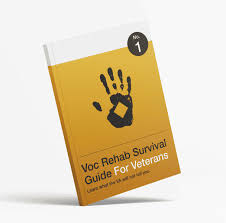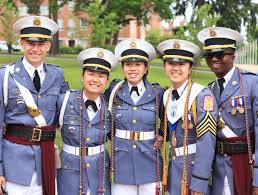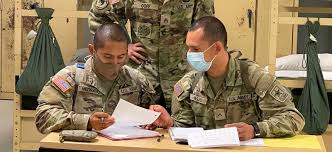Vocational Rehabilitation and Employment Program (Chapter 31)
The Vocational Rehabilitation and Employment (VR&E) Program, also known as Chapter 31, is a valuable resource provided by the U.S. Department of Veterans Affairs (VA) to help disabled veterans with service-connected disabilities prepare for, find, and maintain suitable employment.
Under Chapter 31, eligible veterans can receive a range of services including career counseling, educational training, job search assistance, resume development, and on-the-job training. The program aims to empower veterans with the skills and support they need to successfully reintegrate into the workforce.
Key Benefits of VR&E (Chapter 31):
- Educational Assistance: Veterans may receive financial support for tuition, books, supplies, and other necessary educational expenses.
- Job Placement Services: Assistance with job searches, resume building, interview preparation, and networking opportunities.
- Vocational Training: Access to specialized training programs tailored to individual career goals.
- Counseling Services: Personalized counseling to address employment challenges and develop a customized rehabilitation plan.
Eligibility Criteria:
To qualify for VR&E benefits under Chapter 31, veterans must have a service-connected disability rating of at least 10% or a memorandum rating of 20% or more from the VA. Additionally, veterans must apply for VR&E services within 12 years of their separation from active duty military service.
How to Apply:
Veterans interested in applying for VR&E benefits can contact their nearest VA regional office or Vocational Rehabilitation Counselor. The application process typically involves an initial evaluation to determine eligibility followed by the development of an Individualized Rehabilitation Plan (IRP).
The VR&E Program (Chapter 31) plays a crucial role in supporting disabled veterans on their journey to gainful employment and career success. By providing comprehensive vocational rehabilitation services tailored to individual needs, the program helps empower veterans to overcome barriers and achieve their professional goals.
Common Questions About Vocational Rehabilitation Chapter 31
- What is Voc Rehab chapter 31?
- What is the monthly payment of $2728 with a VR&E?
- What is the difference between Chapter 33 and Chapter 31?
- What is the difference between Chapter 31 and Chapter 33?
- What is Chapter 31 voc rehab?
What is Voc Rehab chapter 31?
The Vocational Rehabilitation and Employment Program, commonly referred to as Chapter 31, is a beneficial program offered by the U.S. Department of Veterans Affairs (VA) to assist disabled veterans with service-connected disabilities in preparing for, securing, and maintaining suitable employment. Through Chapter 31, eligible veterans can access a variety of services such as career counseling, educational training, job search assistance, resume development, and on-the-job training. This program aims to support veterans in acquiring the necessary skills and resources to successfully reintegrate into the workforce despite their service-related disabilities.
What is the monthly payment of $2728 with a VR&E?
The monthly payment of $2728 associated with Vocational Rehabilitation and Employment (VR&E) benefits under Chapter 31 is known as the Subsistence Allowance. This allowance is provided to eligible veterans participating in a rehabilitation program through VR&E to help cover living expenses while they focus on their education or training. The amount of the Subsistence Allowance can vary based on factors such as the veteran’s dependents, the cost of living in their area, and their level of participation in the program. It serves as a crucial financial support for veterans pursuing vocational rehabilitation to enhance their employability and achieve their career goals.
What is the difference between Chapter 33 and Chapter 31?
One frequently asked question regarding Vocational Rehabilitation programs is the difference between Chapter 33 (Post-9/11 GI Bill) and Chapter 31 (Vocational Rehabilitation and Employment Program). While both programs aim to support veterans in their educational and career pursuits, they serve different purposes. Chapter 33 primarily provides educational benefits, including tuition assistance, housing allowances, and stipends for eligible veterans pursuing higher education. On the other hand, Chapter 31 focuses on vocational rehabilitation services for disabled veterans with service-connected disabilities, offering a range of employment-related support such as job training, counseling, and job placement assistance. Understanding the distinctions between these programs can help veterans choose the most suitable option based on their individual needs and goals.
What is the difference between Chapter 31 and Chapter 33?
One frequently asked question regarding Vocational Rehabilitation programs is the difference between Chapter 31 and Chapter 33 benefits. Chapter 31 refers to the Vocational Rehabilitation and Employment Program specifically designed for disabled veterans with service-connected disabilities, offering services such as career counseling, educational training, and job placement assistance to help them re-enter the workforce. On the other hand, Chapter 33 pertains to the Post-9/11 GI Bill which provides education benefits to veterans who have served on active duty after September 10, 2001. While both programs aim to support veterans in different ways – Chapter 31 focusing on vocational rehabilitation and employment, and Chapter 33 on educational benefits – understanding their distinctions can help veterans make informed decisions about which program best suits their needs and goals.
What is Chapter 31 voc rehab?
Chapter 31 Vocational Rehabilitation and Employment (VR&E), commonly referred to as Chapter 31, is a program offered by the U.S. Department of Veterans Affairs (VA) to assist disabled veterans with service-connected disabilities in preparing for, securing, and maintaining suitable employment. Through Chapter 31, eligible veterans can access a range of services including career counseling, educational training, job placement assistance, and vocational rehabilitation tailored to their individual needs. This program aims to empower veterans by providing them with the necessary tools and support to successfully reintegrate into the workforce and achieve their career goals despite any service-related disabilities they may have.




